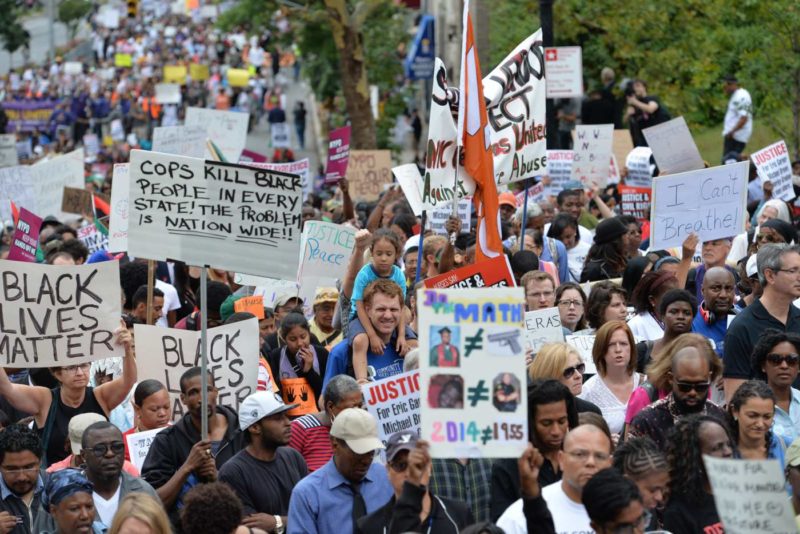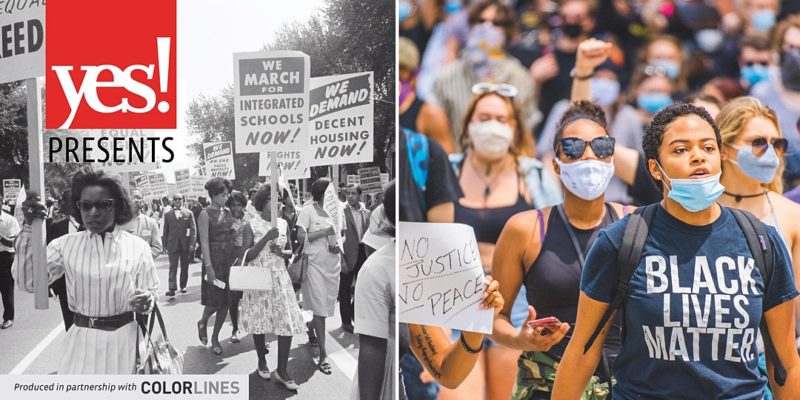Special News Series: Rising Up For Justice! – How to Make Black Lives Really Matter, with Michael Harriot & Jamon Jordan
Share
Explore Our Galleries
Breaking News!
Today's news and culture by Black and other reporters in the Black and mainstream media.
Ways to Support ABHM?
Introduction To This Series:
This post is one installment in an ongoing news series: a “living history” of the current national and international uprising for justice.
Today’s movement descends directly from the many earlier civil rights struggles against repeated injustices and race-based violence, including the killing of unarmed Black people. The posts in this series serve as a timeline of the uprising that began on May 26, 2020, the day after a Minneapolis police officer killed an unarmed Black man, George Floyd, by kneeling on his neck. The viral video of Floyd’s torturous suffocation brought unprecedented national awareness to the ongoing demand to truly make Black Lives Matter in this country.
The posts in this series focus on stories of the particular killings that have spurred the current uprising and on the protests taking place around the USA and across the globe. Sadly, thousands of people have lost their lives to systemic racial, gender, sexuality, judicial, and economic injustice. The few whose names are listed here represent the countless others lost before and since. Likewise, we can report but a few of the countless demonstrations for justice now taking place in our major cities, small towns, and suburbs.

To view the entire series of Rising Up for Justice! posts, insert “rising up” in the search bar above.
How to Make Black Lives Really Matter, featuring Michael Harriot & Jamon Jordan
A conversation on the current uprising with The Root’s Michael Harriot, historian Jamon Jordan, and the editors of YES! and Colorlines.
By Yes! Media
September 4, 2020

About this Event
Join YES! and Colorlines for “This Uprising: How to Make Black Lives Really Matter,” a virtual discussion with Michael Harriot of The Rootand historian Jamon Jordan, hosted by YES! Executive Editor Zenobia Jeffries Warfield and Colorlines Senior Editorial Director Angela Bronner Helm.
This free event on Thursday, Sept. 17 at 1 p.m. PT/4 p.m. ET is open to the public via Zoom. Tickets will be limited for this special event, so reserve your seat now.
Harriot is the senior writer at The Root and a frequent guest of MSNBC and CNN, and Jordan is an African and African American historian, both of whom authored stories in the newly published Black Lives issue of YES! Magazine. Harriot, Jordan, Bronner Helm, and Jeffries Warfield will discuss the impact of the tens of millions of people who have taken to the streets of nearly 550 cities to declare that “Black Lives Matter,” and unpack what Black Lives Matter really means and what it looks like. The panelists will also discuss their contributions to the new issue of YES! Magazine and answer questions from attendees.
Read the full article here.
More Breaking News here.
Explore the ABHM galleries here.









Comments Are Welcome
Note: We moderate submissions in order to create a space for meaningful dialogue, a space where museum visitors – adults and youth –– can exchange informed, thoughtful, and relevant comments that add value to our exhibits.
Racial slurs, personal attacks, obscenity, profanity, and SHOUTING do not meet the above standard. Such comments are posted in the exhibit Hateful Speech. Commercial promotions, impersonations, and incoherent comments likewise fail to meet our goals, so will not be posted. Submissions longer than 120 words will be shortened.
See our full Comments Policy here.